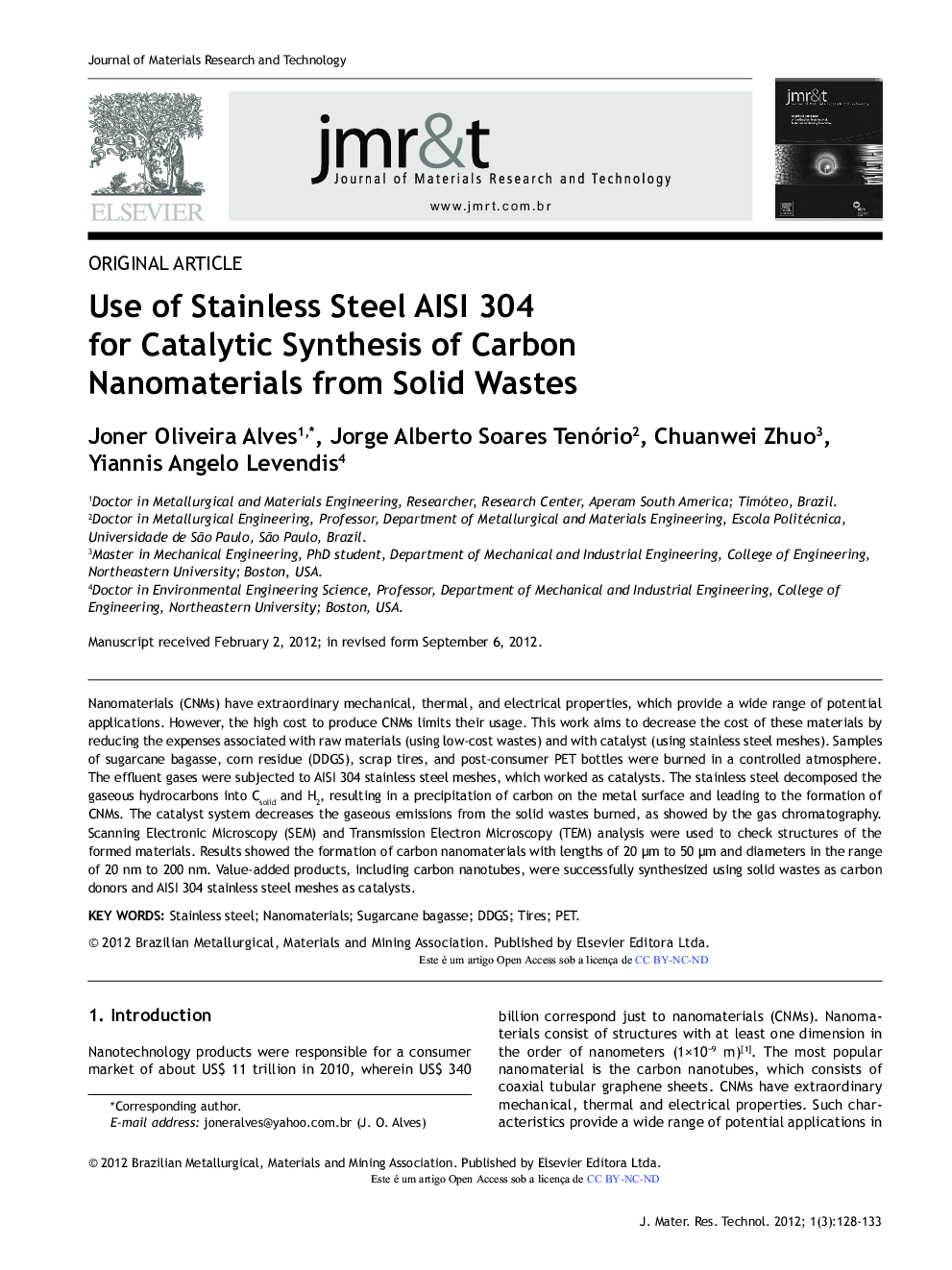| Article ID | Journal | Published Year | Pages | File Type |
|---|---|---|---|---|
| 1480054 | Journal of Materials Research and Technology | 2012 | 6 Pages |
Nanomaterials (CNMs) have extraordinary mechanical, thermal, and electrical properties, which provide a wide range of potential applications. However, the high cost to produce CNMs limits their usage. This work aims to decrease the cost of these materials by reducing the expenses associated with raw materials (using low-cost wastes) and with catalyst (using stainless steel meshes). Samples of sugarcane bagasse, corn residue (DDGS), scrap tires, and post-consumer PET bottles were burned in a controlled atmosphere. The effluent gases were subjected to AISI 304 stainless steel meshes, which worked as catalysts. The stainless steel decomposed the gaseous hydrocarbons into Csolid and H2, resulting in a precipitation of carbon on the metal surface and leading to the formation of CNMs. The catalyst system decreases the gaseous emissions from the solid wastes burned, as showed by the gas chromatography. Scanning Electronic Microscopy (SEM) and Transmission Electron Microscopy (TEM) analysis were used to check structures of the formed materials. Results showed the formation of carbon nanomaterials with lengths of 20 μm to 50 μm and diameters in the range of 20 nm to 200 nm. Value-added products, including carbon nanotubes, were successfully synthesized using solid wastes as carbon donors and AISI 304 stainless steel meshes as catalysts.
